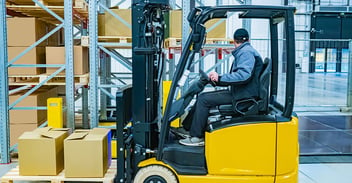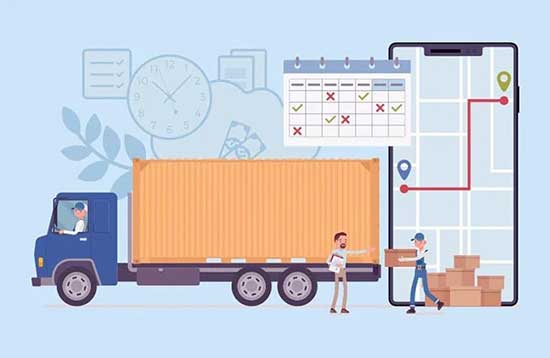

In the fast-paced world of eCommerce, last-mile delivery has emerged as the ultimate battleground for customer satisfaction and loyalty. As the final leg of the supply chain, last-mile delivery is where businesses make their most critical impression on customers. It’s no longer just about getting a product from point A to point B; it’s about delivering an experience that aligns with the growing expectations of speed, reliability, and cost-effectiveness.
Why Third-Party Logistics Players Must Consider Transportation Management Systems
Today’s consumers demand more than ever before. Same-day and next-day deliveries are no longer luxuries but expectations, fueled by giants like Amazon and Walmart. For eCommerce businesses, this means rethinking their logistics strategies to stay competitive. Third-party logistics (3PL) providers, in particular, are under immense pressure to evolve and adapt to these challenges.
The last mile is also the most complex and costly part of the supply chain, accounting for up to 53% of total shipping costs. With rising fuel prices, labor shortages, and unpredictable traffic conditions, optimizing last-mile delivery has become a top priority for CXOs. This is where Transportation Management Systems (TMS) come into play. By leveraging advanced TMS strategies, 3PLs can transform last-mile delivery from a logistical headache into a competitive advantage.
This blog explores the challenges of last-mile delivery and outlines key TMS strategies that 3PLs can adopt to optimize operations, reduce costs, and exceed customer expectations.
Challenges in Last-Mile Delivery for eCommerce
The last-mile delivery landscape is fraught with challenges that can make or break an eCommerce business. Here are some of the most pressing issues:
1. Rising Customer Expectations
Customers today expect faster, cheaper, and more reliable deliveries. Same-day and next-day delivery options have become the norm, and businesses that fail to meet these expectations risk losing customers to competitors.
2. Route Inefficiencies
Traffic congestion, road closures, and unpredictable delivery windows can lead to delays and inefficiencies. Without optimized routing, delivery vehicles often waste time and fuel, driving up operational costs.
3. High Operational Costs
Last-mile delivery is expensive. Labor costs, fuel expenses, and the cost of failed deliveries (when customers aren’t available to receive packages) can quickly add up, eating into profit margins.
4. Scalability Issues
Handling peak seasons, such as holidays or sales events, can be a logistical nightmare. Many 3PLs struggle to scale their operations to meet sudden spikes in demand, leading to delays and dissatisfied customers.
5. Visibility Gaps
A lack of real-time tracking and transparency can frustrate customers and make it difficult for businesses to manage deliveries effectively. Without visibility into the delivery process, it’s hard to identify and address bottlenecks.
These challenges highlight the need for innovative solutions that can streamline last-mile delivery operations. This is where TMS strategies come into play.
Key TMS Strategies for 3PLs to Optimize Last-Mile Delivery
Transportation Management Systems (TMS) are no longer just tools for managing logistics; they are strategic enablers that can transform last-mile delivery. Here are five key TMS strategies that 3PLs can adopt to optimize their operations:

1. Route Optimization & Dynamic Routing
One of the most effective ways to reduce costs and improve efficiency is through route optimization. Advanced TMS platforms leverage AI and machine learning to analyze real-time data, such as traffic conditions, weather, and delivery windows, to determine the most efficient routes.
Dynamic routing takes this a step further by adjusting routes in real-time based on changing conditions. For example, if a delivery vehicle encounters unexpected traffic, the TMS can reroute it to avoid delays. This not only reduces empty miles and fuel consumption but also ensures on-time deliveries.
2. Real-Time Tracking & Customer Communication
Transparency is key to customer satisfaction. Modern TMS platforms offer real-time tracking capabilities that allow customers to monitor their deliveries from dispatch to doorstep. This not only enhances the customer experience but also reduces the likelihood of failed deliveries.
Automated notifications, such as SMS or email updates, keep customers informed about their delivery status. For instance, a customer might receive a notification when their package is out for delivery and another when it’s a few stops away. This level of communication builds trust and reduces the need for customer service inquiries.
3. Smart Carrier Selection & Load Balancing
Not all carriers are created equal. A TMS can help 3PLs integrate multiple carriers into their network, ensuring flexibility and reliability. By analyzing carrier performance data, the TMS can recommend the best carrier for each delivery based on factors like cost, speed, and reliability.
Load balancing is another critical feature. During peak seasons, a TMS can distribute deliveries evenly across carriers to prevent bottlenecks and ensure timely deliveries. This not only improves efficiency but also reduces the risk of overloading any single carrier.
4. Automated Delivery Scheduling & Predictive Planning
AI-powered scheduling is a game-changer for last-mile delivery. A TMS can automatically allocate resources, such as drivers and vehicles, based on delivery requirements and availability. This eliminates manual scheduling errors and ensures that resources are used efficiently.
Predictive planning takes this a step further by forecasting demand and pre-planning capacity. For example, if the TMS predicts a spike in deliveries during the holiday season, it can recommend hiring additional drivers or leasing extra vehicles in advance. This proactive approach minimizes delays and ensures smooth operations during peak periods.
5. Data-Driven Decision Making & Performance Monitoring
Data is the backbone of any successful TMS strategy. Modern TMS platforms offer robust analytics capabilities that allow 3PLs to monitor key performance indicators (KPIs) such as on-time delivery rates, cost-per-delivery, and driver performance.
By analyzing this data, businesses can identify areas for improvement and implement targeted solutions. For example, if the data reveals that a particular route consistently experiences delays, the TMS can recommend alternative routes or carriers. This data-driven approach not only improves efficiency but also reduces costs over time.
Conclusion
Last-mile delivery is no longer just a logistical challenge; it’s a strategic imperative for eCommerce success. With customer expectations at an all-time high, 3PLs must embrace innovative solutions to stay competitive. Transportation Management Systems (TMS) offer a powerful way to optimize last-mile delivery, from route optimization and real-time tracking to predictive planning and data-driven decision-making.
By adopting these TMS strategies, 3PLs can not only reduce costs and improve efficiency but also deliver exceptional customer experiences that drive loyalty and growth. For CXOs, investing in a robust TMS is no longer optional—it’s essential for staying ahead in the rapidly evolving world of eCommerce.
Frequently Asked Questions (FAQs)
Enterprise asset management (EAM) involves the management of mission critical assets of an organization throughout each asset's lifecycle. EAM is used to plan, optimize, execute, and track the needed maintenance activities with the associated priorities, skills, materials, tools, and information. The aim is to optimize the quality and utilization of assets throughout their lifecycle, increase productive uptime and reduce operational costs.
Enterprise asset management (EAM) involves the management of the maintenance of physical assets of an organization throughout each asset's lifecycle. EAM is used to plan, optimize, execute, and track the needed maintenance activities with the associated priorities, skills, materials, tools, and information.
The software helps in effective maintenance of assets through preventive, predictive, shutdown and breakdown maintenance strategies. The system also helps enterprises mitigate equipment risks by enhanced safety standards. The streamlined operations and improved asset performance helps organizations increase their investment effectiveness.
EAM is important because it helps organizations track, assess, manage and optimize asset quality and reliability. Asset intensive Organizations have hundreds, thousands, even millions of assets which needs to be maintained to maximize / optimize life of these assets to increase the return on investment.
The key features of effective EAM are:
- Work management.
- Maintenance Strategies (Preventive/ Predictive / Breakdown / Shutdown).
- Planning and scheduling.
- Supply chain management.
- Health and safety.
- Mobility.
- Analytics.
- Improved Asset Health at reduced cost through data driven maintenance Programs
- Complete visibilityon entire maintenance data across Equipment, across Models, across Branches to aid in analysis & decision making such as to Repair or Replace the Equipment
- Insightful analysis of Inspection Data to improve customer satisfaction
- Effective maintenance management enhanced by predictive maintenance and inbuilt analytics
- Increased reliability and safety, keeps complete track of all the inspections & calibration schedules
- Mobile Application enables users to execute work while “in the field” leading to minimized non-productive time and increased productivity and reduces duplication of work and human errors in recording information.
- Quick turnaround time through Actionable Notification & Alerts for every process in real time and accessible anytime and anywhere.
- Improved Regulatory Part of asset management involves the implementation of better O&M practices, which can significantly improve compliance.
Asset Intensive companies under the following Industries :
- Ports
- Cement and Mining
- Utilities
- Fleet Maintenance
- Equipment Rental
- Other Manufacturing
- Real Estate & Infrastructure
- Power Generation
Contact us for a meeting and schedule a demo
This differs on case to case basis, based on the type of installation and unique industry specific requirements. Contact us for a meeting and schedule a demo.
This differs on case to case basis, based on the type of installation and unique industry specific requirements. Contact us for a meeting and schedule a demo.
Stay Connected, follow us on LinkedIn / Twitter to know more about EAM Software latest trends.

Ragunathan leads Go-to-Market and Branding for Ramco Systems’ Logistics product, bringing extensive experience in digital marketing and product launches. He has a proven track record of driving impactful strategies that deeply connect with target audiences. Passionate about solving complex problems, delivering scalable systems, and enabling organizational growth through innovation, he excels at collaborating with cross-functional teams. Ragunathan values continuous learning and is committed to building practical solutions that deliver real value.


